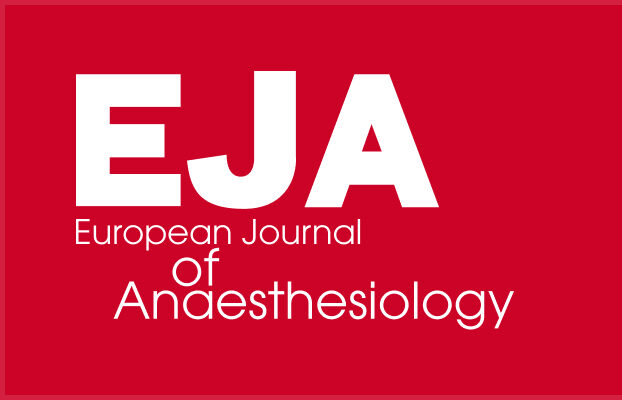Newsletter 2020
Advanced Airway Management During CPR
 The chief editor note:
The chief editor note:
As every year we publish some abstracts of lectures to be presented at the annual Euroanaesthesia November 28-30 2020, Barcelona.
Kemal Tolga Saracoglu, MD
saracoglukt@gmail.com
Providing effective airway and oxygenation are among the main components of advanced life support. The points that determine the issue to be controversial are the absence of evidence that a routine tool or basic method should be at the forefront of airway management during cardiac arrest. There is no consensus yet on the best airway management strategy to improve patient outcome. Several studies have been conducted on this issue and this manuscript aimed to evaluate the most important results.
The European Resuscitation Council (ERC) and the American Heart Association (AHA) recommend tracheal intubation (TI) to secure the airway by qualified and properly trained staff. Although controversial, in the absence of personal skills in TI, the supraglottic airway device (SGA) or mask ventilation (BMV) are two other acceptable alternatives.
The 2015 International Consensus on Cardiopulmonary Resuscitation and Emergency Cardiovascular Care Science reported that either advanced airway or a bag-mask device can be used during CPR (1). The American Heart Association stated that cardiac arrest requires TI within the first 15 minutes in 60% to 70% of patients (2). The incidence of unrecognised oesophagal intubation has been reported as 2.4-17% in studies involving paramedics (3). Besides 3% tracheal tube displacement, 3% multiple intubation attempts, hyperoxemia and long-term interruption in CPR were observed. All were associated with increased risk for intubation related adverse events including a negative effect on coronary and cerebral perfusion. According to the ERC recommendation, tracheal intubation should not last longer than 5 seconds. In cardiac arrest studies, unrecognised misplacement of the tracheal tube has been reported to be associated with morbidity and mortality ranging from 2.9-16.7% (4).
The prevalence of difficult airway incidence in prehospital settings can reach up to 20%. There is a wide range of complications. The incidence of cannot ventilate, cannot intubate scenarios was reported as 1% (5). In an observational study of two institutions, the peri-intubation cardiac arrest rate was reported as fifteen episodes during one year period, accounting for 3.6% of all inpatient arrests (6).
The success rate of paramedics in the first tracheal intubation attempt was reported as 71.4% (7). The mean success rate of CPR interruptions due to tracheal intubation was 109.5 seconds, with a success rate of 91.5% in the 4th attempt. A 14 times risk of increased severe hypoxemia, 7 times increased risk of regurgitation and 4 times increased aspiration risk were reported with more than two intubation attempts.
Compared to BMV, the risk of gastric distension with SGA is lower. SGA placement has gained popularity due to its simple technique and less CPR interruption than tracheal intubation. It was first proposed by the 1997 Liaison Committee on Resuscitation (ILCOR) as an alternative airway management tool to TI in adults during resuscitation.
In the Cardiac Arrest Registry to Enhance Survival (CARES) study, an advanced airway device was used in approximately 80% of the 10,691 out of hospital cardiac arrest patients (8). About two-thirds of patients were intubated and supraglottic airway devices were used in one third. The King LT was the most commonly used SGA. However, compared to SGA, intubated patients were older, and more often male. In addition, the incidence of defibrillation with public AED was lower in these patients. Return of spontaneous circulation (ROSC), hospital survival and neurological outcome results were better. On the other hand, the AIRWAYS-2 study, which included 9296 out of hospital cardiac arrest patients (4886 SGA group and 4410 in the tracheal intubation group), a favourable functional outcome at 30 days did not differ significantly in the AIRWAYS-2 study (9).
In Jabre’s study (10) 2043 patients with out-of-hospital cardiorespiratory arrest in France and Belgium were enrolled. BVM and TI were compared. In the BMV group, regurgitation of gastric content was significantly higher and the rate of ROSC was significantly lower (34.2% vs 38.9%). Benger et al. (9) and Wang et al. (11) compared SGA and TI in the non-physician-based system. The TI success rates were 98% in the Jabre et al. trial, 70% in the Benger et al. trial, and 52% in the Wang et al. trial. Overall, there was no high-certainty evidence to recommend an advanced airway strategy over BMV. Besides, a specific advanced airway device was not recommended either.
Many studies in the literature focused on outcome analysis. However significant differences could not be found in patients with TI or SGA in both retrospective and prospective studies. In a study that retrospectively analysed ambulance records between 2013 and 2014, the data of 209 patients revealed no difference in terms of neurological outcome (12).
In a meta-analysis ROSC, survival to hospital admission, survival to hospital discharge and neurologically intact survival to hospital discharge were investigated for outcome analysis (13). Traumatic cardiac arrest, paediatric patients, rapid sequence induction and videolaryngoscopic intubations were excluded. In this study, 34,533 patients were included in the TI group and 41,116 patients in the SGA group. Compared to SGA, statistically significant higher ROSC rates ([OR] 1.28, 95% confidence interval [CI] 1.05-1.55) and longer duration of hospital stay (OR 1.34, CI 1.03-1.5) were observed in intubated patients. However, when this study is interpreted, there was a lack of control for confounders such as shockable rhythm, witnessed arrest or bystander CPR. This leads to bias and causes confusion.
Conclusion:
The available guidelines are predominantly based on evidence from observational studies and agreed consensus; new and ongoing randomised controlled trials should provide more information. We have no data supporting the routine use of any specific approach for airway management during cardiac arrest. The best technique depends on the conditions in which cardiac arrest occurs and the rescuer’s experience is also important. Tracheal intubation requires a high level of skills and competence. Therefore it is important to have a periodic skill maintenance program.
References
- Soar J, Callaway CW, Aibiki M, et al. Resuscitation 2015;95:e71_e120.
- Andersen LW, Granfeldt A, Callaway CW, et al. JAMA 2017;317:494_506.
- Jarvis JL, Barton D, Wang H. Resuscitation.2018;130:57-60.
- Chou HC, Chong KM, Sim SS, et al. Resuscitation 2013;84:1708-12.
- Schalk R,Seeger FH,Mutlak H, et al. Resuscitation. 2014 Nov;85(11):1629-32.
- Park C.. Acute Crit Care.2019;34:212-218.
- Wang HE, Simeone SJ, Weaver MD et al. Ann Emerg Med. 2009 Nov;54(5):645-652.e1.
- McMullan J, Gerecht R, et al.; . Resuscitation. 2014;85:617-22.
- Benger JR, Kirby K, Black S, et al… JAMA. 2018;320:779-791.
- Jabre P,Penaloza A,et al, l. JAMA. 2018;319:779-787.
- WangHE, Schmicker RH, Daya MR, et al.. JAMA 2018;320:769-778.
- Edwards T,Williams J,Cottee M. Emerg Med Australas. 2019 Feb;31(1):76-82.
- Benoit JL, Gerecht RB, Steuerwald MT, et al.. Resuscitation. 2015 Aug;93:20-6.









